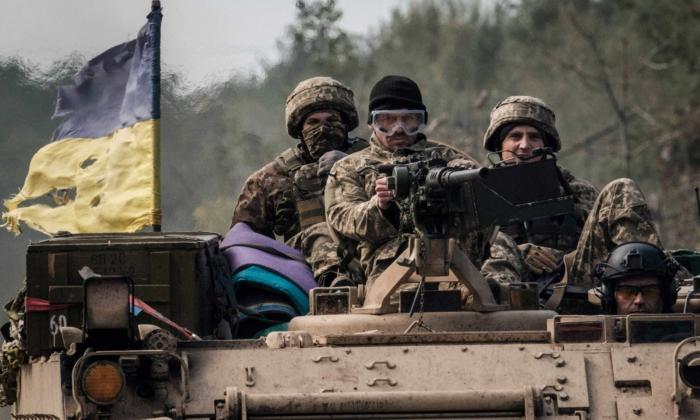On May 22–23, the Russian Volunteer Corps and the Free Russia Legion crossed from Ukraine into Belgorod Oblast, Russia (with a second incursion on June 5). These two groups allegedly comprise Russian citizens aligned with the Armed Forces of Ukraine. These groups reportedly used American Humvees and M1224 MaxxPro MRAPs in their operation. This temporary incursion was embarrassing for Moscow.
Upon our discovery, White House National Security Council spokesman John Kirby stated on May 25 that “we have again made it very clear to the Ukrainians what our expectations are about attacking Russia—we don’t want to encourage or enable that, we certainly don’t want any U.S.-made equipment used to attack Russian soil.”
This may be pro forma; however, I believe that the Biden administration and Congress are continuing down the same trodden path of “red lines” and “fear of provoking Russia” that has permeated our government since the start of this war. Thus far, we have told the Ukrainians not to bring the war home to the Russians—it is high time President Joe Biden and Congress change their tune.
If our goal is for Ukraine to militarily defeat and expel Moscow, Biden, Congress, and the Department of State must explicitly say so—rather than the current ambiguity that pervades the majority of both political parties. This lack of articulation and incremental approach to hard aid will drag on this war and potentially create another “frozen conflict” (for example, Transnistria) in the post-Soviet space.
A “freezing” of the conflict via a ceasefire would benefit Russia and China. The Chinese special representative, Li Hui, attempted to push such a ceasefire “before conflict spreads beyond Ukraine” and promote “strategic autonomy,” that is, European security without America—a not-so-subtle attempt to create rifts in the Alliance and weaken support for Ukraine. Instead, we need a clear statement of purpose: the military defeat of Russia by Ukraine.
Last year, we said “no tanks” as it would provoke Russia; in May, we said “yes” to tanks. Recently, we said “no fighter jets” as it would provoke Russia; now, we have agreed to not only train Ukrainian pilots to fly American F-16s but also allow our NATO allies to donate their F-16s to Ukraine.
Let us not continue this incrementalism.
The July 2023 NATO summit in Vilnius, Lithuania, will be the opportune moment to put an end to ambiguity and incrementalism; specifically, the United States should announce that we are providing not only F-16s but also the long-range missiles that have thus far been denied: the Army Tactical Missile System (ATACMS). During the Vilnius summit, we must also boldly proclaim with our Eastern flank allies: Ukraine’s rightful place is in NATO.
From a purely geostrategic perspective, Ukrainian membership protects NATO-member Poland, which has been arming itself to the teeth and turning the Black Sea into a virtual NATO lake, similar to the Baltic Sea with Finland’s April 2023 accession (and hopefully soon, Sweden). NATO benefits from Ukraine’s battlefield experience against Russia, and Ukraine will never again go at it alone with Article 5 protection—a proven deterrent (for example, the Baltic States lacking a “special military operation”).
There can be no special formats, councils, or other security arrangements—Kyiv must be granted a Membership Action Plan that leads to full membership in the Alliance once the war ends. There will be folks who argue this will “provoke Russia” or “prevent peace.” It’s the same ole song and dance of those who have yet to learn anything from this conflict.
Let’s provide the Ukrainians with the tools they need to secure their freedom and defend the democratic world—a defeated Russia would assuredly also serve as a deterrent to our other geopolitical enemy: communist China. American security interests and liberty are served by NATO and a victorious Ukraine.

